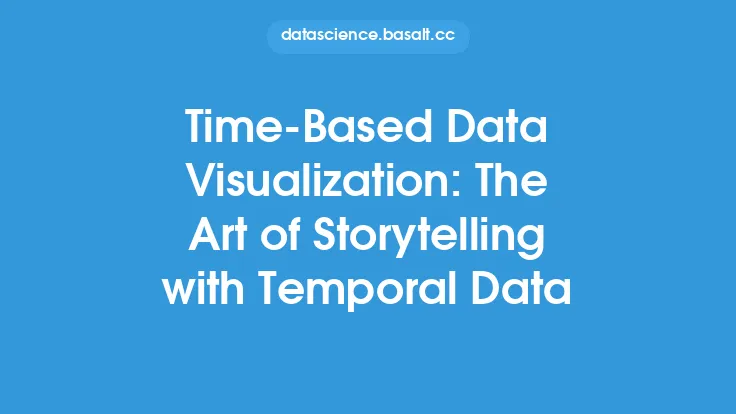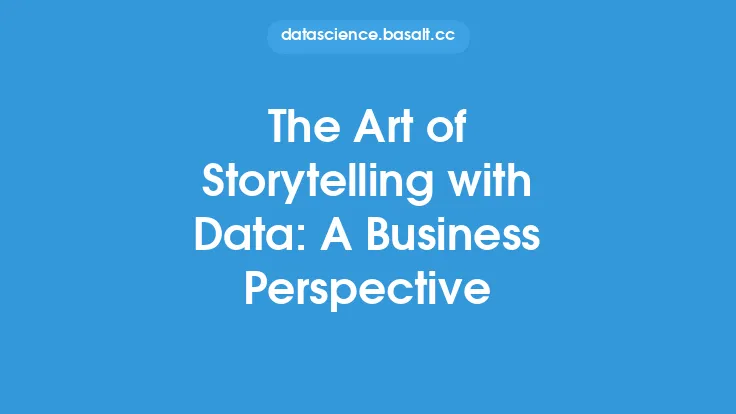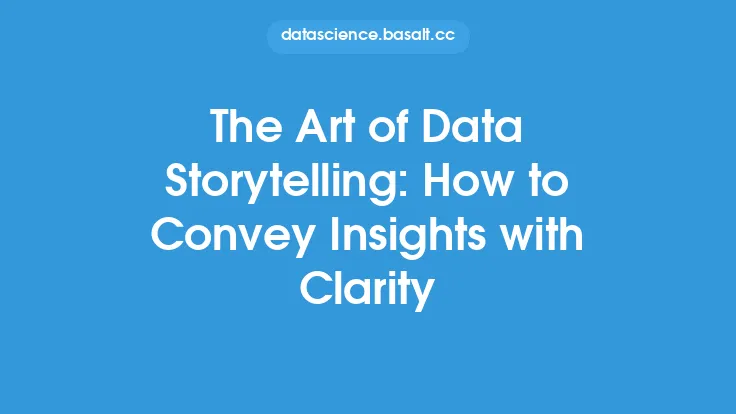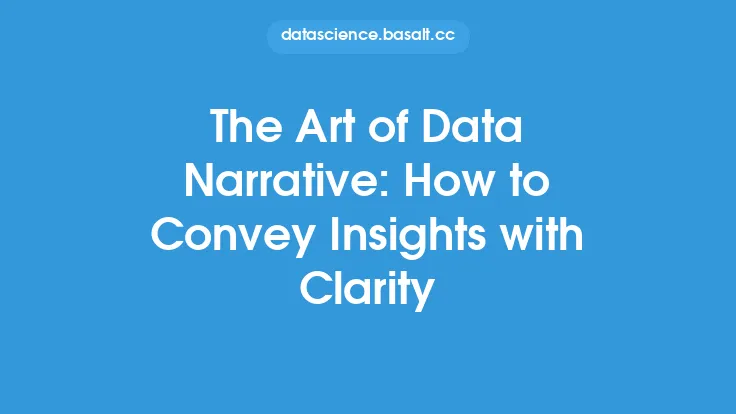Storytelling has been an integral part of human communication since the dawn of time, allowing us to convey complex ideas, emotions, and experiences in a way that resonates with others. With the advent of data visualization, this age-old art form has evolved to incorporate the language of data, giving rise to a new narrative paradigm: storytelling with data. At the heart of this paradigm lies information visualization, a subset of data visualization that focuses on presenting data in a way that facilitates understanding, insight, and decision-making. In this article, we will delve into the world of information visualization techniques, exploring the principles, methods, and best practices that underpin the art of storytelling with data.
Introduction to Information Visualization
Information visualization is a discipline that combines computer science, statistics, and design to create interactive and dynamic visual representations of data. The primary goal of information visualization is to enable users to extract insights, identify patterns, and make informed decisions by leveraging the cognitive and perceptual abilities of the human brain. Effective information visualization techniques can transform complex data into intuitive and actionable knowledge, facilitating communication, collaboration, and decision-making across various domains. By harnessing the power of information visualization, organizations can unlock the full potential of their data, driving business growth, improving operational efficiency, and enhancing customer experience.
Principles of Information Visualization
To create effective information visualizations, it is essential to understand the fundamental principles that govern this discipline. These principles include:
- Clarity: The visualization should clearly communicate the intended message, avoiding unnecessary complexity and visual noise.
- Accuracy: The visualization should accurately represent the underlying data, avoiding distortions, biases, and errors.
- Relevance: The visualization should be relevant to the target audience, addressing their specific needs, interests, and goals.
- Consistency: The visualization should maintain consistency in terms of design, layout, and visual encoding, ensuring that the message is conveyed effectively.
- Interactivity: The visualization should provide interactive elements, such as filtering, zooming, and hovering, to facilitate exploration and discovery.
Information Visualization Techniques
A wide range of information visualization techniques are available, each suited to specific data types, analysis tasks, and communication goals. Some of the most common techniques include:
- Scatter plots: Used to visualize relationships between two continuous variables, scatter plots are ideal for identifying correlations, patterns, and outliers.
- Bar charts: Used to compare categorical data, bar charts are effective for displaying distributions, trends, and rankings.
- Line charts: Used to show trends and patterns over time, line charts are commonly used in financial, economic, and scientific applications.
- Heatmaps: Used to visualize complex relationships between multiple variables, heatmaps are particularly useful for identifying clusters, correlations, and patterns.
- Network diagrams: Used to represent relationships between entities, network diagrams are ideal for visualizing social networks, supply chains, and communication flows.
Best Practices for Information Visualization
To create effective information visualizations, it is essential to follow best practices that ensure clarity, accuracy, and relevance. Some of the key best practices include:
- Keep it simple: Avoid unnecessary complexity and visual noise, focusing on the key message and insights.
- Use color effectively: Use color to draw attention, convey meaning, and differentiate between variables, but avoid overusing color or using it inconsistently.
- Label and annotate: Provide clear labels, annotations, and legends to ensure that the visualization is easy to understand and interpret.
- Use interactive elements: Incorporate interactive elements, such as filtering, zooming, and hovering, to facilitate exploration and discovery.
- Test and refine: Test the visualization with target audiences and refine it based on feedback, ensuring that the message is conveyed effectively and the insights are actionable.
Technical Considerations
When creating information visualizations, it is essential to consider technical factors that can impact the effectiveness and usability of the visualization. Some of the key technical considerations include:
- Data quality: Ensure that the data is accurate, complete, and consistent, as poor data quality can compromise the validity and reliability of the visualization.
- Scalability: Ensure that the visualization can handle large datasets and scale to meet the needs of different users and applications.
- Interoperability: Ensure that the visualization can be easily integrated with other tools, systems, and platforms, facilitating collaboration and decision-making.
- Accessibility: Ensure that the visualization is accessible to users with disabilities, following guidelines and standards for accessibility and usability.
- Security: Ensure that the visualization is secure, protecting sensitive data and preventing unauthorized access or misuse.
Conclusion
Information visualization is a powerful tool for storytelling with data, enabling organizations to extract insights, identify patterns, and make informed decisions. By understanding the principles, techniques, and best practices of information visualization, organizations can create effective visualizations that communicate complex ideas, facilitate collaboration, and drive business growth. As the volume, velocity, and variety of data continue to increase, the importance of information visualization will only continue to grow, making it an essential skill for anyone working with data. By mastering the art of storytelling with data, organizations can unlock the full potential of their data, driving innovation, improvement, and success in an increasingly data-driven world.





